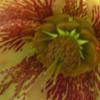
I don’t tend to review products as I feel that in order to provide a good review I need to test them properly and I am just too disorganised for that. I can read a book, consider a plant but testing a product is more challenging. However, I was rather tempted by the email asking me (some time ago – I told you I was disorganised) if I would consider review a new peat-free seed compost from Dalefoot Composts
Peat-free is one of those subjects that can really divide gardeners. The alpine plant growers I know through the Alpine Garden Society tend to still rely on John Innes which is peat based. However, there is a growing movement in horticulture that gardeners should stop their reliance on peat in composts. I think the attraction of peat based composts is that they are good at retaining moisture whereas the majority of alternatives dry out very quickly and are hard to re-wet. Personally I don’t have any strong views. I do use John Innes for my bulbs and alpines and without guilt as I figure the amount I use is so small that it hardly makes an impact and really I would like to see the plant producers change their practice across the board first. When it comes to seeds and general potting up I sometimes go for peat free but it generally depends on what is available since there are a number of peat free brands that having used once I have no desire to use again.
Dalefoot Compost was particularly interesting to me since it is made of a combination of bracken and sheeps wool. The bracken provides a high level of potash which is good for fruiting and flowering and the sheep wool provides nitrogen but also helps with water retention! Interestingly, according to their website, rhubarb in Yorkshire is grown in wool!

Larkspur seedlings
I have to admit that I was anticipating a small bag of seed compost probably enough for a seed tray not a full size bag. Unfortunately life got very busy at this point and it is only recently that I have got around to sowing some perennial seeds and so an opportunity to try out the compost became available. I was surprised by the very open quality of the compost, I really dislike claggy compost as I feel the germinating seedlings have little chance of pushing through it. I sowed a range of perennials and annuals and watered them well. They went in the greenhouse and over the last three weeks, since sowing, I have only had to water them once a week and even then the seed trays haven’t completely dried out – this was very pleasing as I have struggled with before with peat-free compost and with germinating seeds you really don’t want to have the moisture of the compost changing radically.
Today, I was delighted to see that the Larkspur and Cerinthe had started to germinate and look good and strong.
Admittedly the compost is quite expensive compared to the standard and well-known makes you can get in your local garden center. This is a bit of a stumbling block for me but it depends on how much compost you use and what your budget is like. I suppose it comes down to that old adage ‘You pays your money, you take your choice’. However, I will definitely consider using this compost again as I really like the texture of it and if peat based compost is going to be withdrawn from the market over the coming years then this would be an excellent alternative.

